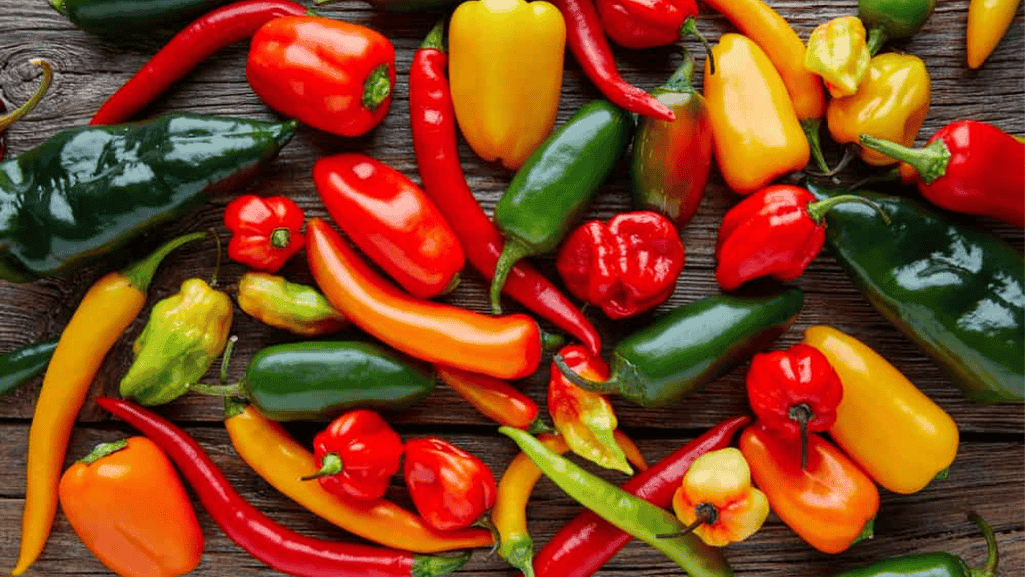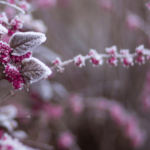
Beautiful flowers gardenia Plants For Your homes

Chili peppers are pungent berry fruits from the genus Capsicum in the nightshade family. They add bright heat and deep flavor to food across the world and show up in many cuisines.
This ultimate guide will cover origins, key species, the science of heat, nutrition and health, safe handling, cultivation tips, classic products, and signature dishes through time.
Flavor and intensity change by variety, growing conditions, and form—fresh, dried, or powdered—so home cooks have many ways to use them.
We highlight capsaicin as the compound behind heat and the pain sensation, plus how to choose the right level for your recipe. You’ll learn to distinguish common categories like bell types versus hot types.
From their New World roots to kitchens in New York and beyond, these fruits shaped regional cooking and remain a beloved spice when used thoughtfully.
Capsicum fruits are both a botanical curiosity and a kitchen staple. These berries belong to the Solanaceae family, closely related to tomatoes and eggplant. They vary widely in color, shape, and taste.
The English term comes from Classical Nahuatl chīlli. Three spellings are accepted: chili (US), chile (Mexico and parts of the US), and chilli (UK and former British colonies). Knowing regional usage helps when following recipes or reading labels.
Capsicum are botanical berries that contain seeds. Five domesticated species dominate kitchens worldwide: C. annuum (including bell and hot types), C. chinense, C. frutescens, C. baccatum, and C. pubescens.
“Colors and growing conditions shape both flavor and heat.”
Capsicum plants began in what is now Peru and Bolivia and entered human diets thousands of years ago. Cultivation in east‑central Mexico followed, creating multiple domestication centers across Central and South America.
Europeans met these fruits during the Columbian Exchange. Records show arrival in Spain by 1493, and by the 1500s they appeared in gardens and kitchens across the continent.
By 1569 paprika production had begun in the Balkans, showing how fast local processing and naming took hold.
Portuguese and Spanish trade networks carried capsicum to Africa, Arabia, south asia, and southeast asia. Climate and existing spice cultures helped the introductions stick.
Birds do not sense capsaicin heat, so they eat ripe fruits and spread seeds over long distances. Mammals taste burning and avoid them, which gives the plant an evolutionary edge.
“Birds helped the plant widen its range while humans selected varieties to fit local food traditions.”
Local kitchens worldwide lean on vibrant capsicum to craft bold, memorable flavors. These fruits shape dishes across many cuisines and give regional food distinct heat and aroma.
From Mexico to Thailand and India: Mexican classics use jalapeño, ancho, guajillo, and chipotle in mole and salsas. Thai curries rely on bird’s eye for sharp heat. Caribbean jerk leans on Scotch bonnet, while Goan vindaloo can feature bhut jolokia.
Flavor goes beyond burn. Smoky chipotle, fruity habanero, and earthy ancho bring different notes. Sichuan dishes add a numbing-spicy balance that contrasts heat with aroma.
“Layering different types creates nuanced, memorable food experiences.”
For lighter diets, use these fruits sparingly to add big flavor with minimal calories. Balance heat with acid, fat, or sweetness to let the spice sing without overwhelming the dish.
Capsicum species form a living catalog of shapes, colors, and heat levels for cooks and gardeners alike.
Five domesticated species anchor most kitchen use: capsicum annuum, C. frutescens, C. chinense, C. baccatum, and C. pubescens.
Visual cues help choice: thin walls dry well; thick walls roast and stuff better. Orange or yellow often hint at fruity notes.
Capsaicin concentrates near the placenta and inner membranes, so removing those parts lowers perceived heat. Try species-label shopping to match texture and flavor to your recipe.
“Explore heirlooms and ornamentals like Black Pearl for garden flair and unexpected flavor.”
Understanding capsaicin shows how chemistry turns flavor into a sharp burning sensation. The compound (8‑methyl‑N‑vanillyl‑6‑nonenamide) and related capsaicinoids create pungency without actual heat damage.
In mammals, capsaicin binds pain receptors in the mouth and throat. That binding triggers nerve signals the brain reads as pain or heat even though tissue temperature stays unchanged.
The Scoville Heat Unit is a legacy sensory scale based on dilution. Since the 1980s, HPLC quantifies capsaicinoids for precise comparison. Recent studies helped standardize labels so cooks can pick reliable SHU ranges.
Birds lack the sensitive receptor and happily eat ripe fruit, helping plants spread seeds. Mammals avoid the burn, so the plant’s strategy favors avian dispersal.
“Pain signals can lessen with repeated exposure, which explains growing tolerance in some eaters.”
Understanding how heat scales makes swapping one variety for another safe and predictable in the kitchen.
Below is a practical heat ladder to help you pick the right ingredient by intensity and flavor.
Selectively bred strains push limits: Pepper X (~2.69M SHU), Carolina Reaper (up to ~2.2M), Dragon’s Breath (~2.48M), and others show how capsaicin concentration can skyrocket.
Warning: extreme SHU levels can cause real pain and health risk. Taste only micro-quantities and dilute in larger batches when testing.
“Aroma and flavor matter as much as raw SHU—choose by both heat and taste.”
Beyond flavor, these fruits deliver key nutrients and modest health effects supported by small trials and lab work. Per 100 g, red hot chili peppers supply about 40 kcal, are roughly 88% water, and offer high vitamin C, vitamin B6, potassium, and provitamin A carotenoids.
Capsicum contains capsanthin, violaxanthin, and lutein. Red fruit often yields higher antioxidant levels than green. Choosing varied colors helps diversify phytonutrients in everyday meals.
Several studies report that capsaicin can slightly raise thermogenesis and reduce appetite. Effects are modest and work best as part of balanced food and activity habits.
“Use these fruits to add flavor with few calories, but expect modest, variable gains.”
People with sensitivity should add them slowly and watch for digestive risk. Consult a clinician if symptoms persist.
Understanding hazards and simple fixes helps you enjoy heat without needless harm.
Stomach reactions and tolerance
Eating hot fruit may cause immediate stomach pain, cramps, sweating, or vomiting in some people. Those with IBS or sensitive digestion can experience worsened abdominal pain and diarrhoea.
Studies show effects vary by individual. Gradual exposure can build tolerance, but overconsumption still may cause severe pain and require medical attention.
Safe handling in the kitchen
Capsaicin can irritate skin, eyes, and mucous membranes on contact. Wash alone may not remove it. Wear gloves, avoid touching your face, and wash cutting boards and knives thoroughly.
When toasting or grinding dried pods, ventilate the kitchen. Aerosolized particles can sting eyes and lungs and may cause coughing or breathing difficulty.
Practical first aid and common-sense rules
“Poison control centers in New York and elsewhere advise against dare-style capsaicin challenges due to real health risks.”
From backyard beds to commercial farms, successful harvests start with the right soil, sun, and timing.
Growing basics: Start seeds indoors near 70°F and transplant after frost. Plant in loamy soil, full sun, and keep soil moist but not waterlogged. Protect plants from cold snaps so fruit set continues through the season.
Ideal daytime temps are 70–84°F; extremes above 86°F can cut pollen viability and reduce yield. Provide afternoon shade or mulch during peak heat to protect blossoms.
Monitor common pests—aphids, red spider mite, and whitefly—and watch for grey mould (Botrytis cinerea). Use integrated pest management: remove infected leaves, improve airflow, and encourage beneficial insects.
Traditional drying threads fresh chilies into ristras for airflow and decoration. In humid climates use dehydrators or low oven temps to prevent spoilage.
Smoke-drying: Ripe jalapeños become chipotle when smoke‑dried, adding deep, smoky complexity to sauces and rubs over time.
Products range from whole dried fruits and flakes to blended chili powder (often with cumin and garlic), pure single‑variety powders, infused oils, and bottled hot sauce.
Tip: Techniques from south asia and southeast asia inform efficient warm‑weather drying and fiery product styles.
Capsicum began in the New World and now flavors kitchens across the world.
These small fruits add color, aroma, and heat. They offer modest health perks—some studies link capsaicin to appetite control and pain relief for certain individuals.
Use different types intentionally by matching heat and flavor to the recipe. Taste small amounts, remove membranes or seeds to lower burn, and mix mild with hot varieties to build balance.
Handle them with care, store jars safely, and respect other diners’ thresholds. Research is promising but mixed, so treat consumption as culinary, not curative.
For a practical step, plan a dish with a new chili pepper and note how it changes your meal and comfort over time.




